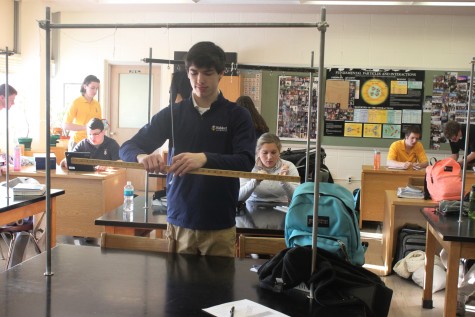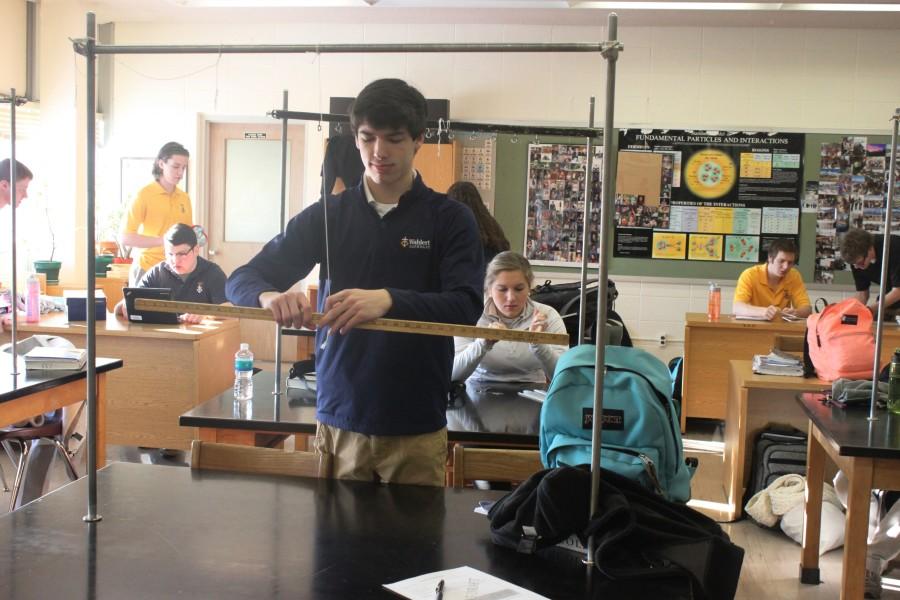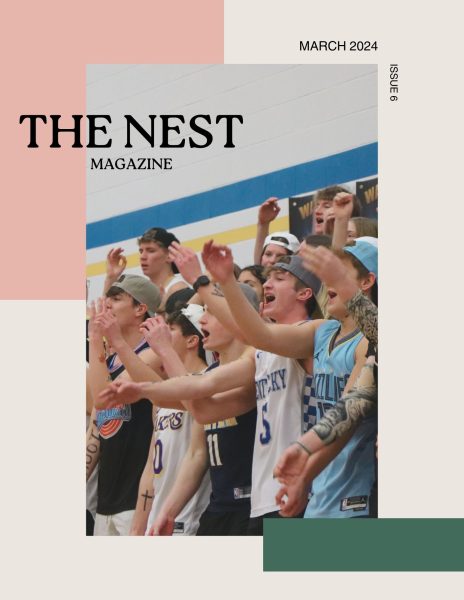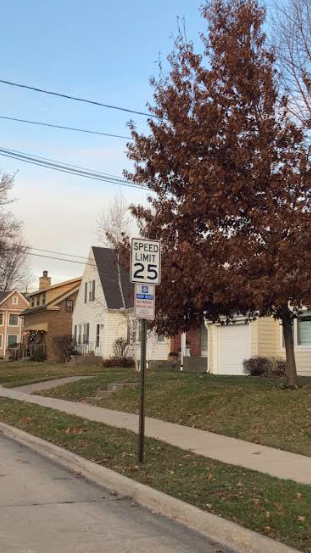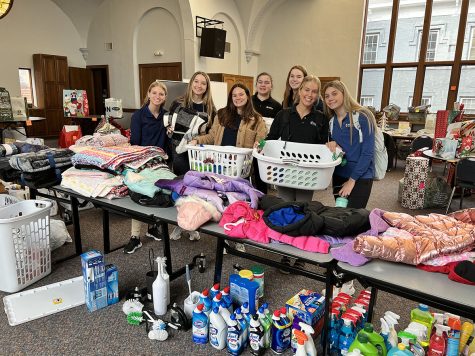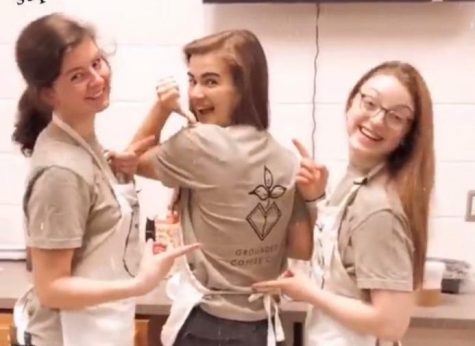Student physicists to compete at state
Suspense fill the gymnasium as Sam Berning, ‘15, wound taught the propulsion string of his mousetrap car and placed his creation, which he affectionately named “Thin Mint” due to its unorthodox color scheme and storage container, at the assigned starting point. His nervousness was obvious to both the spectators and his teammates alike due to the setbacks of his previous launches.
Prior to releasing the mechanism into the hands of God and the judges, the participants could faintly hear Berning whispering the lyrics to a Simon and Garfunkel song, his personal good luck charm. Then, with one swift motion, Berning freed the mousetrap and watched as his creation rolled with its signature awkward wobble, barely coasting to the edge of the finishing mark and into the history books. Thin Mint stop within half a centimeter of the measure mark.
Okay, so it’s not that intense, but the annual Keystone AEA Regional Physics Competition is no joke. Every year, college-level physics students are asked to form a team which will enter two members into five different events, including the mousetrap car, catapult, toothpick bridge, soda straw arm, and a challenge problem.
Each event is unique and presents its own challenges. The mousetrap car, which teaches the builder more about mechanical motion and the transfer of energy, must stop as close to the five hundred fifty centimeter mark as possible.
The catapult requires the designer to launch a ping pong ball at three separate targets and the team which is the most accurate wins. This event exists to instruct the operators on basic trajectory gaging and the uses of spring tension.
The soda straw arm is, you guessed it, made out of soda straws and must be constructed within 20 minutes. It is then tested by placing a specific weight at the end of the arm. The team whose arm is the longest and can support the weight wins the event.
The toothpick bridge is, as its name implies, a bridge-like structure composed of toothpicks which is tested by continuously putting weight on the span until it either bends too low or breaks due to the tension. The purpose of this event is to educate the student on the purpose of trusses and arches in load-bearing architecture.
The final event, the finding of the unknown mass, carries a lot of weight in the competition. This is by far the most mathematically intense event as it requires the participants to set up an apparatus to aid the students in discovering an unknown mass. It is also the hardest to score and usually requires a few days for the official scores to be released.
As with any competition, there are numerous rules and regulations used to keep the playing field level. These rules can vary from the exact dimensions of the mousetrap car to the brand of glue that is allowed to hold the toothpick bridges together. This inevitably puts more stress on the students, but certainly does not stifle their creativity.
One mousetrap car would fly past the line then slowly reverse towards the mark, while others used unconventional techniques to solve for the unknown mass in the challenge problem.
On March 31, students from all over northeastern Iowa met at the Monona High School to compete in the primary phase of the physics event. Reaching the top of the scoreboards were seniors Sam Berning and Trenton Grierson’s mousetrap car and seniors Alex Miller and Matthew Wigginton’s toothpick bridge. The challenge problem was dominated by Cassidy Shubatt, ‘15, and Sam Hoelsher, ‘16.
These teams will advance to the state competition which will be held at University of Northern Iowa April 16. Joining them will be Blake Derby and Jonathan Schaefer, ‘15, in the catapult; and Sabrina Fleege and Stephanie Callahan, ‘15, in the soda straw arm competition.
